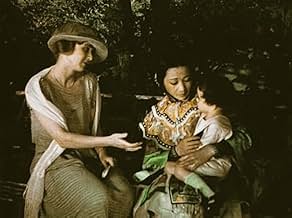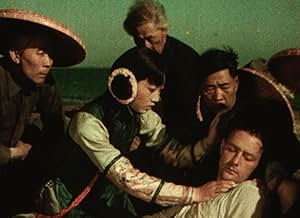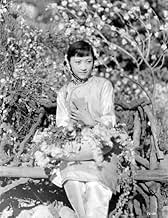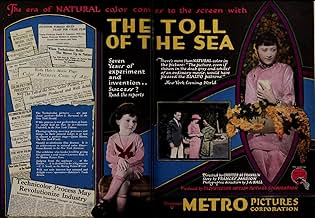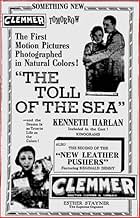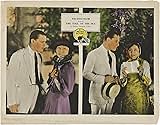Adicionar um enredo no seu idiomaWhile visiting China, an American man falls in love with a young Chinese woman, but he then has second thoughts about the relationship.While visiting China, an American man falls in love with a young Chinese woman, but he then has second thoughts about the relationship.While visiting China, an American man falls in love with a young Chinese woman, but he then has second thoughts about the relationship.
- Direção
- Roteirista
- Artistas
- Prêmios
- 1 vitória no total
Avaliações em destaque
We do not know with certainty why this lovely and touching adaptation of Madame Butterfly became what is generally regarded as America's first feature length color film. Technicolor's founder, Herbert Kalmus, was involved in the production of The Toll Of The Sea (TTOTS). But how it happened that this particular movie with a well known storyline and mostly unremarkable settings became the vehicle for achieving its landmark status is now difficult to determine. Perhaps it came about because of Anna May Wong's exotic costumes or remarkably expressive face. She was one of the outstanding beauties of her time, and was only 17 when she worked on TTOTS. In any event, we should be eternally grateful that Wong's stunning appearance at the beginning of her career has been preserved for later audiences to appreciate.
TTOTS is also important in documenting the remarkable maturity of Wong's acting ability while she was still only a teenager. She clearly overshadows the other principals in the film by demonstrating how to create an authentic character notwithstanding the highly melodramatic nature of the plot, and its familiar resemblance to the well known Puccini opera. We are left with only sadness in realizing what Wong might have done with roles that were even better suited to her talents but she was denied because of prevailing racism. It is well known that she sought out the female leading part in The Good Earth (that ultimately went to Caucasian Luise Rainer)--and also the subordinate one of Paul Muni's concubine (eventually played by Caucasian Tillie Losch)--only to be rejected as being "too Chinese." A similar fate befell her attempt to win the part of Mrs. Hammond in The Letter--given at director William Wyler's request to Caucasian Gale Sondergaard.
That Anna May Wong was prohibited by blatant racism from developing into the actor she could have been, notwithstanding her extraordinary glamour and ability as demonstrated in TTOTS, is one of the most tragic episodes in Hollywood history.
TTOTS is also important in documenting the remarkable maturity of Wong's acting ability while she was still only a teenager. She clearly overshadows the other principals in the film by demonstrating how to create an authentic character notwithstanding the highly melodramatic nature of the plot, and its familiar resemblance to the well known Puccini opera. We are left with only sadness in realizing what Wong might have done with roles that were even better suited to her talents but she was denied because of prevailing racism. It is well known that she sought out the female leading part in The Good Earth (that ultimately went to Caucasian Luise Rainer)--and also the subordinate one of Paul Muni's concubine (eventually played by Caucasian Tillie Losch)--only to be rejected as being "too Chinese." A similar fate befell her attempt to win the part of Mrs. Hammond in The Letter--given at director William Wyler's request to Caucasian Gale Sondergaard.
That Anna May Wong was prohibited by blatant racism from developing into the actor she could have been, notwithstanding her extraordinary glamour and ability as demonstrated in TTOTS, is one of the most tragic episodes in Hollywood history.
This silent pic has a young American washed ashore in Asia and rescued by beautiful local Anna May Wong. One thing leads to another, but eventually he goes home to the USA, leaving his Chinese wife behind with a baby on the way. Obviously inspired by Mme Butterfly but set in China, rather than Japan, it has no singing but that's OK.
Victoria saw this 10 yrs ago at MOMA, with no music. In 12/01 it has played Turner Classic Movies as part of the "Treasures from American Film Archives" package, from a nicely-restored Tech print and with a musical score added. (I hope she didn't miss it!) The very end of the pic is lost, but there is a resourceful solution which actually works effectively. Little-known picture is definitely worth your time, and not just for the novelty of seeing a silent in 2-strip Technicolor.
Wong is terrific in the lead and the film is very well made by director Franklin -- not exactly a household name at my household, but a competent helmer with a nicely understated touch. The pictures aren't quite Maurice Tourneur but the performances could be. Cast is small, with just 3 principals plus a child and a couple of character women, and all do fine work here. TOLL is also newly available in a DVD set paralleling the "Treasures" special feature on TCM, and there are many other gems, large and small, in the package, but this particular picture really is a treat.
Victoria saw this 10 yrs ago at MOMA, with no music. In 12/01 it has played Turner Classic Movies as part of the "Treasures from American Film Archives" package, from a nicely-restored Tech print and with a musical score added. (I hope she didn't miss it!) The very end of the pic is lost, but there is a resourceful solution which actually works effectively. Little-known picture is definitely worth your time, and not just for the novelty of seeing a silent in 2-strip Technicolor.
Wong is terrific in the lead and the film is very well made by director Franklin -- not exactly a household name at my household, but a competent helmer with a nicely understated touch. The pictures aren't quite Maurice Tourneur but the performances could be. Cast is small, with just 3 principals plus a child and a couple of character women, and all do fine work here. TOLL is also newly available in a DVD set paralleling the "Treasures" special feature on TCM, and there are many other gems, large and small, in the package, but this particular picture really is a treat.
This beautifully told story was written by Frances Marion, the highest paid and most famous woman screenwriter of the early film days. It is beautifully photographed in color, one of the first. The story loosely follows Madame Butterfly and is tender and touching.
The Toll of the Sea draws an audience because it was made in the early two strip Technicolor process. The story is about a Chinese girl named Lotus Flower (Anna May Wong) who finds a man dashed upon the rocks by the sea and rescues him. His name is Allen Carver (Kenneth Harlan) and he is an American. He and Lotus Flower fall in love and get married against the warnings that he will leave her for a white woman. Allen has good intentions until some American friends convince him to leave Lotus Flower behind because an inter-racial marriage would never work. The prophesy comes true, and Allen marries childhood sweetheart Elsie (Beatrice Bentley) in America, leaving Lotus Flower with a baby (Priscilla Moran) and a broken heart.
The story is simple, sad, and poetic with some great acting by Wong. Unfortunately, many of her films are lost or unavailable, but she is always impressive in the roles she is given. Thankfully, the Chinese are portrayed sympathetically with very little stereotyping.
The Technicolor is amazing here. We see mostly green and red, but the costuming and settings are strategically designed to utilize those colors. What results is a breath-taking film.
The end of this film is lost, but it was restored by filming the Pacific Ocean with an original Technicolor camera. The title cards make the ending clear and the loss of footage does not detract from the ending's emotional power.
The story is simple, sad, and poetic with some great acting by Wong. Unfortunately, many of her films are lost or unavailable, but she is always impressive in the roles she is given. Thankfully, the Chinese are portrayed sympathetically with very little stereotyping.
The Technicolor is amazing here. We see mostly green and red, but the costuming and settings are strategically designed to utilize those colors. What results is a breath-taking film.
The end of this film is lost, but it was restored by filming the Pacific Ocean with an original Technicolor camera. The title cards make the ending clear and the loss of footage does not detract from the ending's emotional power.
This 1922 film is apparently the first feature length film ever made in color, which alone makes it worth watching. It stars the beautiful, incomparable Anna May Wong, who was 17 at the time. She already shows remarkable maturity as an actress. The story unfolds when Lotus Flower discovers a Caucasian man floating in the sea and enlists help to save him. They fall in love and get married. Does the love last? This film is very dramatic, and it lasts under one hour. The story is told simply, with interesting twists in the tale. The film was thought lost for years until it was found, with the ending needing to be re shot. See it for the historical, pioneering aspect of it. But, most important, see it for the great performance of Anna May Wong. This movie cements the brilliant and varied versatility that she had as an actress.
Você sabia?
- CuriosidadesThe seventh color feature, the second Technicolor feature, the first color feature made in Hollywood, and the first color feature anywhere that did not require a special projector to be shown.
- Citações
Old Chinese Gentleman: Whence comes this foreign face?
Lotus Flower: Alone in my garden I heard the cry of wind and wave. I came hurrying fast - and he was here!
Old Chinese Gentleman: Beware of this stranger! The sea is treacherous. His coming bodes no good!
- Versões alternativasIn 1985, this film was restored using original negative materials, by Richard Dayton and Pete Comandini of the YCM Laboratories, and Robert Gitt of the UCLA Film and Television Archives, using funds from the AFI/NEA Film Preservation Program. Because the last 3-minute sequence of the Pacific Ocean was missing, it was re-shot using Frances Marion's titles from her scenario and an authentic 2-strip Technicolor camera. The film ran 53 minutes plus about one minute of explanatory information and restoration credits.
- ConexõesFeatured in Les premiers pas du cinéma - Un rêve en couleur (2004)
Principais escolhas
Faça login para avaliar e ver a lista de recomendações personalizadas
- How long is The Toll of the Sea?Fornecido pela Alexa
Detalhes
- Tempo de duração
- 54 min
- Mixagem de som
- Proporção
- 1.33 : 1
Contribua para esta página
Sugerir uma alteração ou adicionar conteúdo ausente

